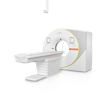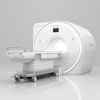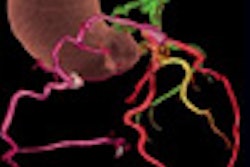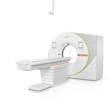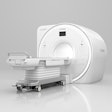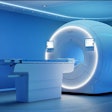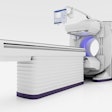CHICAGO - People in the U.S. are getting so heavy that, even though they are most likely to be at risk for major diseases, they may outweigh the ability to be treated.
For example, if a person weighs more than 350 lb -- obviously at risk of heart disease -- that individual cannot receive a diagnostic angiography because the standard angiography table cannot support that much weight.
And what happens if a morbidly obese 450-lb patient experiences severe abdominal pain? Instead of having a CT scan to look for the cause, the patient may have to undergo risky exploratory surgery.
The reason: The patient is too heavy to be accommodated by most standard devices.
In a presentation at the RSNA 2007 meeting, Dr. Raul Uppot, a lecturer in radiology at Harvard Medical School and an assistant radiologist at Massachusetts General Hospital, both in Boston, said manufacturers are looking at ways to build devices that can handle patients with expanded girth, but many patients are too big to be treated.
"When patients weigh more than 450 lb, standard diagnostic imaging often cannot be used," Uppot said. "In these cases, physicians must resort to other means of diagnosis, such as exploratory surgery or using less accurate or more invasive techniques."
"Morbidly obese people may be too heavy for standard tables" used for imaging devices, said Dr. Philip Alderson, the James Picker Professor and chairman of radiology at Columbia University in New York City. "These people may be too large to fit in tubes such as magnetic resonance imagers. And the excess fat may prove to be too much for standard x-rays to penetrate. It is a problem that we increasingly have to face with these very large individuals."
Imaging technology, according to Uppot, has been designed for leaner patients than those who make up a growing number of morbidly obese patients in the U.S.
"Standard x-ray has a limit of 350 lb," he said. "MRI has a 350-lb limit. CT is 450 lb. Open MRI units can accommodate patients up to 550 lb, but these are usually located outside hospitals and have a lower image quality."
Uppot said these limits are especially problematic in light of the increasing number of morbidly obese patients undergoing bariatric surgery -- surgery that exposes the patients to risks that often require CT scans or MRI to diagnose.
Uppot and colleagues reviewed records of 1,188 bariatric surgery patients treated at Massachusetts General Hospital from June 1999 through April 2007 to identify patients weighting more than 450 lb who sought treatment at the emergency department following surgery.
Forty-four patients, average weight 504.9 lb, had complications that required treatment at the emergency department. Of those, 12 patients needed imaging studies "but were too large for standard imaging equipment," Uppot said.
For that reason, the patients had an average delay of 18 days before their condition was correctly diagnosed and treated, including one patient who waited 124 days. That patient, who weighed 504 lb when he presented with abdominal pain, shed 79 pounds while waiting for a definitive diagnosis. As a result, the patient fit into a CT scanner, which confirmed nonspecific inflammation as the cause of the pain.
By Edward Susman
AuntMinnie.com contributing writer
November 28, 2007
Related Reading
Obesity increases radiation dose delivered during atrial fibrillation ablation, July 20, 2007
Obesity forces radiology to supersize, enhance x-ray technology, March 1, 2007
Copyright © 2007 AuntMinnie.com
